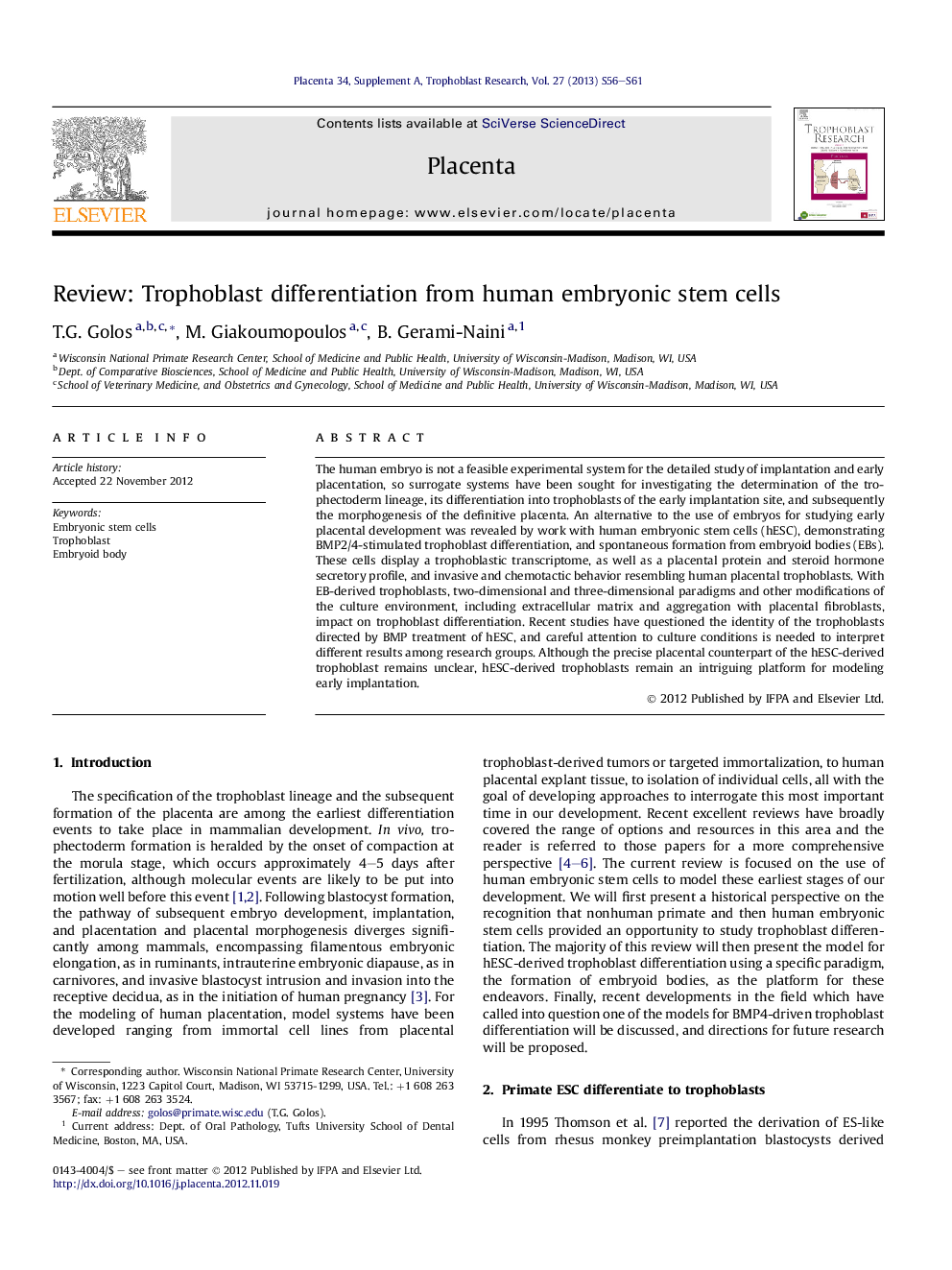| کد مقاله | کد نشریه | سال انتشار | مقاله انگلیسی | نسخه تمام متن |
|---|---|---|---|---|
| 5895134 | 1154452 | 2013 | 6 صفحه PDF | دانلود رایگان |
The human embryo is not a feasible experimental system for the detailed study of implantation and early placentation, so surrogate systems have been sought for investigating the determination of the trophectoderm lineage, its differentiation into trophoblasts of the early implantation site, and subsequently the morphogenesis of the definitive placenta. An alternative to the use of embryos for studying early placental development was revealed by work with human embryonic stem cells (hESC), demonstrating BMP2/4-stimulated trophoblast differentiation, and spontaneous formation from embryoid bodies (EBs). These cells display a trophoblastic transcriptome, as well as a placental protein and steroid hormone secretory profile, and invasive and chemotactic behavior resembling human placental trophoblasts. With EB-derived trophoblasts, two-dimensional and three-dimensional paradigms and other modifications of the culture environment, including extracellular matrix and aggregation with placental fibroblasts, impact on trophoblast differentiation. Recent studies have questioned the identity of the trophoblasts directed by BMP treatment of hESC, and careful attention to culture conditions is needed to interpret different results among research groups. Although the precise placental counterpart of the hESC-derived trophoblast remains unclear, hESC-derived trophoblasts remain an intriguing platform for modeling early implantation.
Journal: Placenta - Volume 34, Supplement, March 2013, Pages S56-S61
